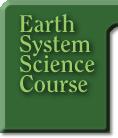Virtual
Study Spaces
The various spaces listed below are where you will
study and work individually and with the other participants
and your facilitator. You will need to link to these actual
virtual study spaces through the Classroom. An overview of
what you will do in each of these virtual study spaces is
included below.
Teacher
as Problem Solver Space
You will work in Teacher as Problem Solver Space during Week
A (4, 7, 10 and 13). You will individually identify what you
believe to be true and the reasons for why you have those
beliefs regarding the event. Then, as a team, you will build
ESS knowledge about the event described in the scenario and
develop a problem statement.
Teacher
as Model Builder Space
You will work in Teacher as Model Builder Space during Week
B (5, 8, 11 and 14). Using your original or revised problem
statement, your team will build an ESS model that includes
the ESS relationship statements and evidence that support
your conclusions (recommendations or solutions)
Teacher
as Designer Space
You will work in Teacher as Designer Space during Week C (6,
9, 12 and 15). Using what you have learned about PBL lessons
from the student perspective, you will individually design
PBL lessons for your students. Your PBL lessons should be
focused on an Earth system science event. Post your lessons
for feedback from your critical friend. Then, you will act
as a critical friend to at least one teammate to assess his
or her PBL lesson and offer suggestions for improvement.
Journal
Space
Your journal is a private place where
you can post your reflections, comments, and suggestions concerning
the course. Your journal will be pass worded so that only you
and your facilitator may access it. For this reason, you may
use your journal to carry on a private dialog with the facilitator.
You may post to your journal during every week of the course.
However, you are required to make reflective learner entries
in your journal at the end of Weeks 6, 9, 12, and 15. Your
reflective learner entries during these weeks will be graded.
Course
Space
The facilitator uses Course Space to give instructions, clarify
concepts, and answer questions; participants use Course Space
to request guidance, reply to the facilitator's queries, and--in
Week 1--to meet the other course participants.
Resource
Space
Throughout the course, the developers, facilitator, and participants
may submit those resources thought to be particularly useful
both to participating teachers' professional development and
their students' use in the classroom. These resources may
be designed by you, or they may simply be compelling activities
you have found (e.g., on the Internet, on one of the course's
CDs, or in other sources). They may include compelling and/or
favorite web sites or activities you have found or used.
Please
remember that some materials are copyrighted. Be sure to include
a full citation. If they are commercial, the source must be
cited.
[
Where to Start ] [ Joining
the Community ] [ Knowing Your
Facilitator ] [ How to Sit in the
Front] [ Virtual Cooperative
Learning ] [ Being an Online
Learner ] [ Online Environment
] Virtual Study Spaces
[ Home ] [ Intro
] Guide [ Outline ]
[ Classroom ]
HTML
code by Chris Kreger
Maintained by ESSC Team
Last updated August 07, 2000
Privacy
Statement and Copyright©
1997-2000 by Wheeling Jesuit University/NASA Classroom of the Future™. All
rights reserved.
|



